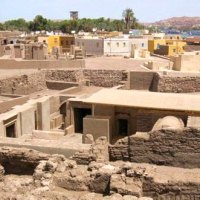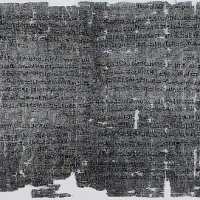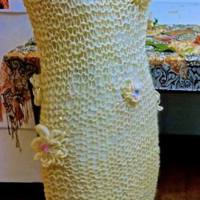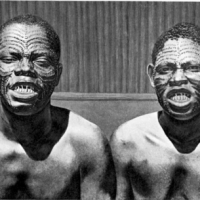Recent events in the West African Sahel by way of food crises, religiously based conflict, ethnically based conflict, and military coups are the most recent iterations of interdependent environmental, political, economic, religious, social and cultural changes that have been taking place for upwards of two millenia.
My earlier blogs about city states in East Africa discuss the mercantile-based trade for slaves and for ivory that were developed by Swahili and Arab settlers travelling from the East African coast into the interior in the Nineteenth Century and earlier. These ventures resulted in a different set of linkages and associated institutions than those developed in West Africa.
Links to blog discussions on city-states in East Africa:
- Background: Swahili city states: Pre-European ‘Colonizers’ of East and Central Africa
- For more on local leaders see: Sheikhs and Sultans of the Swahili ‘City-states’ – What Sir Burton had to Say
- and: Sheikhs and Sultans of the Swahili ‘City-states’ – Stanley’s Experiences
- For more on cuisines and crops see: Swahili ‘City States’ in 19th Century East Africa: Indigenous and Imported Crops
Given the current attention to the West African Sahel, I will put up several blogs focusing particularly on historical aspects of trade, institutional arrangements, impact of Islam, and agriculture over the past 1000+ years.
These blogs are brief commentaries on key events, later to be consolidated into one document.
A brief history:

The Sahel is a band of sandy, arid forests and scrublands separating tropical africa from the Sahara. Source: Mueller-Sahel

Since at least the 9th century caravan trade linked North Africa and Egypt to emerging city-states that developed in the western Sahel. Source: R. Oliver, The African Experience. 1999.

City-states were located within the Sahel, where farming on or near the inland delta of the Niger River allowed for good harvests. Source: unknown
Major lineage based city-states that developed in the area (shown in the above map) obtained food security by means of generally excellent farming possibilities, especially with the development and growth of indigenous West African rice – together with millet production. With food secured, merchants from north Africa, in conjunction with Saharan based nomadic groups (especially Tuareg, as desert guides and intermediaries), developed caravan trade into the Sahel, while the indigenously founded city-states developed market links with tropical regions in the south.
Some aspects of this trade are discussed here: Cuisines and Crops of Africa, 18th Century: Food and Farming in Timbuktu .
The Sahel has been the home of numerous, lineage-based small states that can be traced back by means of written Arabic records beginning in the 9th Century AD; and earlier, by means of archaeology. to the stone settlements of Tichitt, located in southern Mauritania (and elsewhere), where salt and iron were traded for products from both the north and the south:

Neolithic life in the Dhar Tichitt-Walata, Mauritania, (ca. 4000–2300 BP) see location on following map. Sorce: F.C.Holl

Walata and Tichitt, to the west, were some of the first links to caravans between North Africa and further south. It was a key source of salt and other products obtained from southern groups, and importer of products from the north. Source:home.comcast.net/~DiazStudents/RomeRivals.jpg
Prior to the introduction of camels, trade would have been by head transport as well as by cattle-drawn wagons and lightly made chariots drawn by horses:

Cattle drawn wagons would probably have been used for local transport and not trans-Saharan, due to problems of water. Source: Rock Art From the Dhar Tichitt (Mauritania)

Chariots drawn by horses, originating from north Africa, could not themselves carry produce, but could be used to lead and defend caravans in which head transport (‘porterage,’ as in East Africa) was used. Source: Oliver-The African Experience, 1999.

Imported from North Africa many hundreds of years before, horses were then locally raised and widely used in developing mounted cavalry and in war. Ashantee horseman equipped for war, Ashanti, Africa, 1824. From: Joseph Dupuis,Journal of a Residence in Ashantee 1824.
The Arabic Connection – explorations of an undergraduate:
As an undergraduate, the complexity of these city-states fascinated me, and when looking for a topic for my honors thesis (joint degree, Arabic language and literature and social anthropology), I was offered a copy of an Arabic manuscript that had been obtained by one of my anthropology professors who had obtained it while doing research in Borno (a former city-state to the west of Lake Chad – see above map). It was written in the 18th century, and he was told by his colleagues in Bornu that it dealt with political intrigues at the end of the 18th century.
Translation and commentary of the document of 22 sheets – together with an analysis of associated social, political and economic context – made an excellent, though rather difficult, thesis project.

This is not the document on which I worked – but is from the same period and with similar composition. The written tradition of the time followed that of North Africa and the Middle East, discussed below. Source: Borno – ifriqi handshettima kagu qur’an ca 16c to 18 c
The title of the document on which I worked, written in the local language of Kanuri, was ‘Awake and Listen!’ or ‘Fane Fane‘. Kanuri is a tonal language having high, low and falling syllables, thus separate pronunciations of the two words in title. The document addressed political intrigues in the Sahel at that time – a period typified by various jihads (religious wars) within and between city-states. The author of the document was warning against ‘venal imams‘, who, he said, were irreligious Muslims manipulating religion to further their own (groups’) political aims.
The text was in Arabic, as well as the tafsiir (exegesis) – while the diglossia (odd-angled jottings in the margins, see above sheet) were written in archaic kanembu – the local language of the time in the city-state of Bornu (now officially called ‘Borno’), but – I think – may be no longer spoken.
Working in the Sahel:
Over the years I’ve had the opportunity to work in the Western Sahel. One of the most interesting assignments was during the period that I was with the World Bank [1], travelling throughout the Sahel as part of an Africa-wide assessment of indigenous and introduced environmental management issues – particularly indigenous agroforestry systems and related societies. Our team was asked to have an audience with the Shehu (shaykh) of Borno [2] to discuss our work in the area. This was somewhat amazing, knowing what I did about the region’s history and past Shehus and my past work on city-states and Islam. My prior work on the history of the region provided an excellent background by which to assess current happenings (as it still is). These past Fulani activities were taken most seriously by inhabitants, and were used by some as models or justifications for proposed political and religious activities – as, no doubt, they still are today by insurgents.
Footnotes:… in 1808 Fulani warriors conquered Ngazargamu. Usman dan Fodio led the Fulani thrust and proclaimed a holy war (the Fulani War – Jihad) on the allegedly irreligious Muslims of the area. His campaign eventually affected Kanem-Borno and inspired a trend toward Islamic orthodoxy, but a Muslim scholar-turned-statesman, Muhammad al-Amin al-Kanemi, contested the Fulani advance…
Source: Wiki
- I was a consultant with The Environment Division for Africa of the Bank – conducting assessments of a variety of indigenous and introduced soil, water and tree management – and agroforestry systems – together with program-project recommendations, throughout Africa. A taskthat took about 18 months, followed by various writeups.
- At that time I was there, the Shehu was Alhaji Mustapha Ibn Umar Kyari Amin El-Kanemi (b. 1924 d. 21 February 2009).
Returning to the Arabic manuscripts
There are thousands of Arabic manuscripts throughout the Sahel, many being kept by families in Tachitt, Timbuktu, Maiduguri, and elsewhere (see above maps), which give testimony to the development of an indigenous tradition, and during later periods (up into the 20th century) with Bornu as the cradle of Kanuri culture and language. Several organizations have been working over the past several decades to help preserve and digitize these and related important sources of history.
Sadly, many have – and may continue to be destroyed as a result of the most recent fighting in Timbuktu, northeast Nigeria, and adjoining areas. Here is a link to work of the Library of Congress:
Islamic Manuscripts from Mali: About the Collection –
By digitizing Arabic manuscripts from Timbuktu, Mali, the Library of Congress has entered into a new and evolving field of collection development and scholarly activity. The Library successfully exhibited and copied these manuscripts, initiating positive and productive contacts with Malian scholars, manuscript owners, and government officials–especially Abdel Kader Haidara, owner and director of the Mamma Haidara Commemorative Library in Timbuktu:
Islamic Manuscripts from Mali – Library of Congress Ancient Mss. from the Desert Libraries of Timbuktu – Library of Congress
Islam is now being used by some groups to justify fighting in northern Mali under the rubric of a jihad – or holy war. Thus, following the scenarios of past efforts to gain control of the area, which includes Timbuktu and Gao. More recently, the so-called boko haram have used Islam as a justification for their raids, killings, kidnappings and other activities.
New armed group captures Timbuktu MALI: Ansar dine vs. Ansar dineRelated articles
- Mali, Wahabis and Saudis (counterpunch.org)
- Timbuktu Who’s Who (dianabuja.wordpress.com)


























Reblogged this on Jugraphia Slate.
LikeLike
Pingback: Sahelian City-States in the Western Sahel: Part 2 | DIANABUJA'S BLOG: Africa, The Middle East, Agriculture, History and Culture
Pingback: 2013 in review | DIANABUJA'S BLOG: Africa, The Middle East, Agriculture, History and Culture
Pingback: Mali: The Next Afghanistan? « elcidharth
Pingback: City States in the Sahel: Pre-European Kingdoms of West Africa, Pt.1 - Continental Food Recipes
Pingback: A Taste of 2012 – Top Posts Favor Colonial Era; Food; Ancient Egypt | DIANABUJA'S BLOG: Africa, the Middle East, Agriculture, History & Culture
This piece of history is reconstructing the image of the African continent as the Food Bowl in the Millennium Era in contrast to the present World of today.
LikeLiked by 1 person
fascinating; thank-you so much. The maps are great – What is the source of the trade routes map?
LikeLiked by 1 person